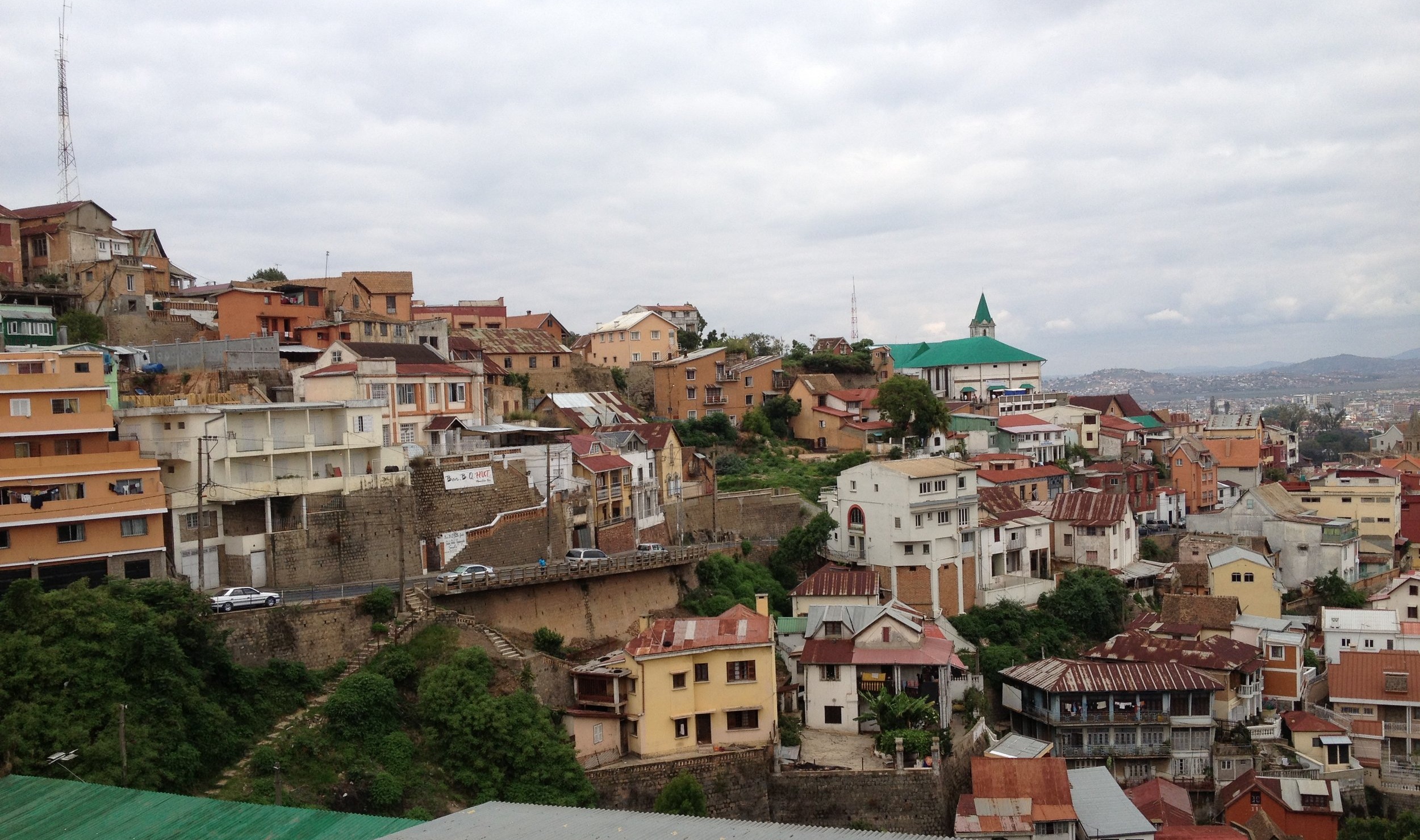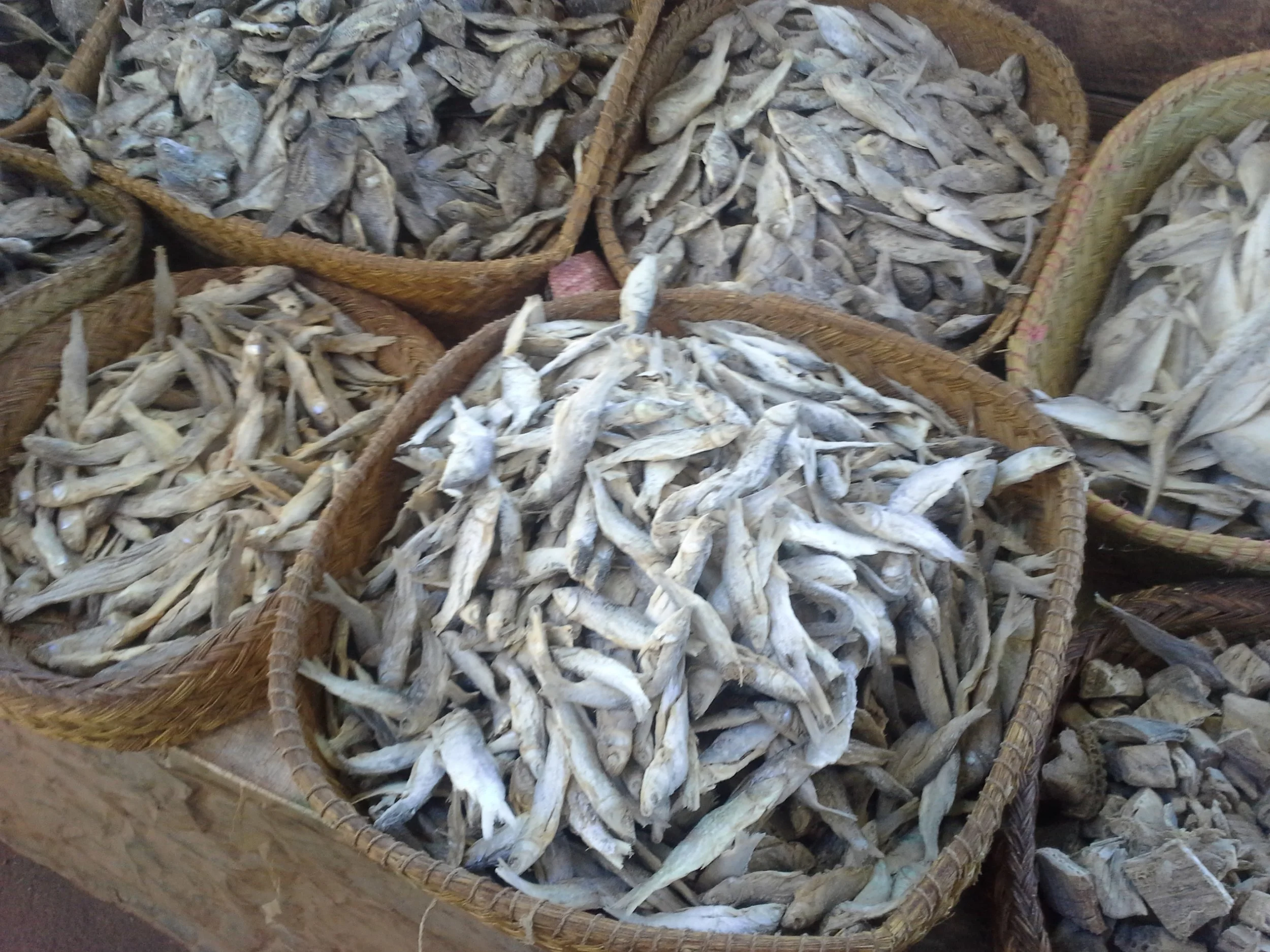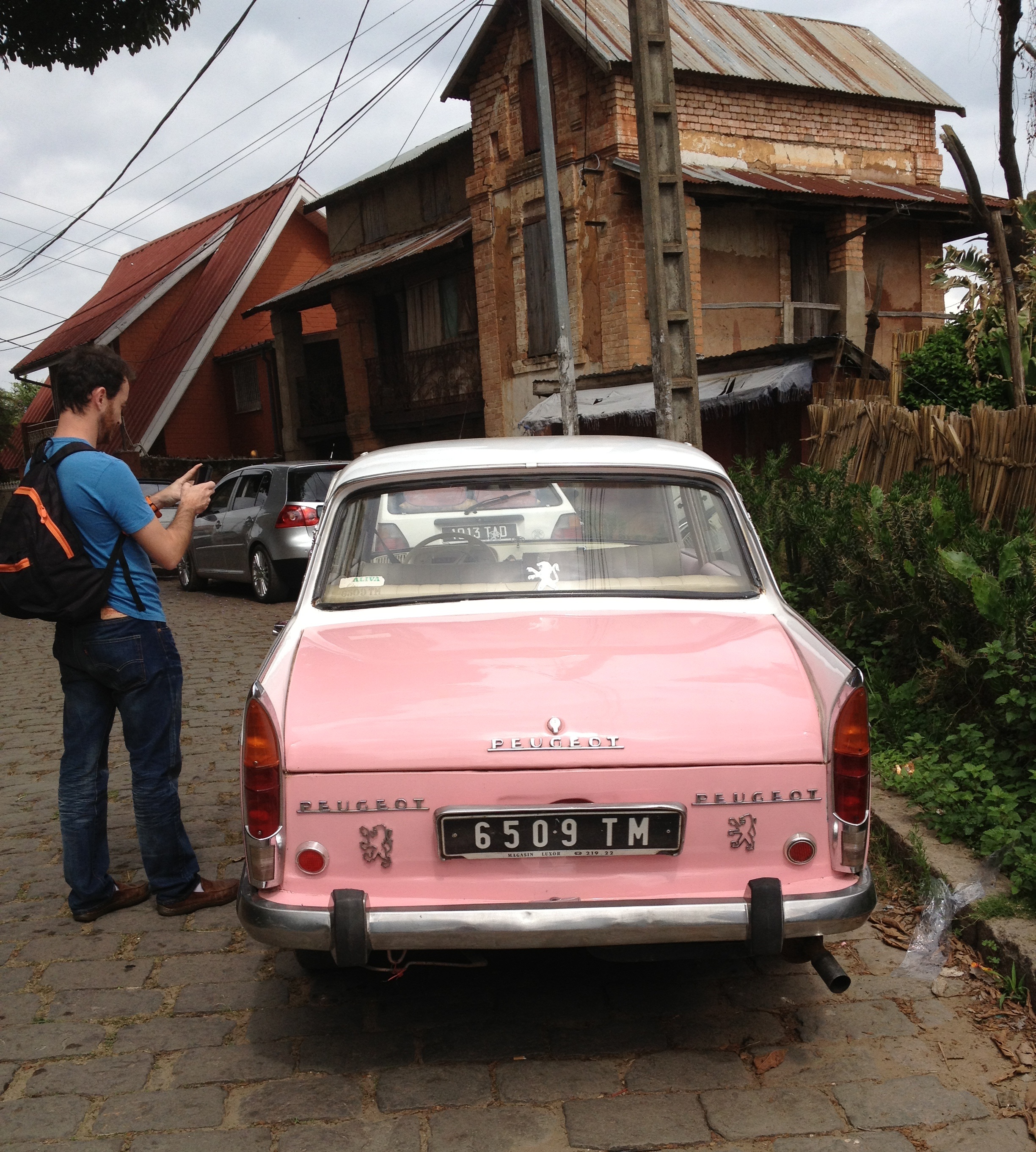It’s only eight miles from Madagascar’s international airport to the center of the capital, Antananarivo, but the journey can take an hour, often longer. The two-lane highway passes through a densely-populated area. After a few tatty hotels and the Chinese casino, it’s the typical African or Asian street scene—honking cars, slow-moving trucks, hole-in-the wall shops, children playing on the narrow sidewalk, porters lounging on hand carts.
It’s a mesmerizing car window sideshow of small retail establishments—a tire repair shop next to a beauty salon, then a halal butcher, a one-room health clinic, a furniture workshop, a SIM card recharge outlet, a shop selling friperie (second-hand clothes), a small hotel, a lumber yard, a used car parts store, another beauty salon, all crammed into narrow storefronts. Then a wall plastered with posters for music concerts and religious revivals, almost obscuring the Défense d’Afficher (forbidden to post) sign. A jumble of colorful hand-painted signs, mostly in French or Malagasy with a sprinkling of English—Good Auto, Rehoboth Shack, Smile Pizza, Quick Fix Oil Change, Flash Video.
For the last four miles, the road runs along the levee of the River Ikopa. The low-lying areas around Antananarivo are crisscrossed by canals supplying water to the rice paddies. Among the paddies are islands of shacks, with chickens, geese and ducks (some destined to be pâté) running free. Zébu, the humped cattle that are the mark of wealth in rural Madagascar, graze freely on patches of grassland. Then past the 15,000-seater national rugby stadium—home of the Makis (the lemurs)—to a retail district centered, without any sense of ideological irony, on a square dedicated to a communist hero, the Place de Ho Chi Minh.
Situated just over 4,000 feet above sea level, Antananarivo—usually abbreviated by both locals and foreigners as Tana—with its hills and narrow, winding streets, feels like a tropical, slightly rundown version of Paris, surrounded by rice paddies.
From the 8th century AD, the central highlands of Madagascar were settled by the Merina, whose ancestors can be traced to the Malay Archipelago. They brought with them their traditional clan organization and agricultural practices, particularly rice cultivation. Until the French colonized the island at the end of the 19th century, the highlands were a bit like medieval Europe, albeit with nicer weather. Local lords, supported by armed retainers, ruled the villages and rice fields from fortified hilltop positions. Antananarivo was founded in the early 17th century by the chieftain Andrianjaka who built his rova (fortress) high on a hill; in Malagasy, Antananarivo means “city of the thousand,” a reference to the ruler’s army. From the rova, the royal real estate expanded, with new palaces and royal tombs built on the highest points of the ridge.
The residential topography of Antananarivo reflected class distinctions. Down the hill from the palaces were the houses of the andriana, the noble class; the commoners, the hova, lived further down the slope, and the slave caste (andevo) and rural migrants on the plains to the west. Members of castes were required to live in designated districts and return to them after working in other places. Non-nobles were not allowed to build wooden houses or keep pigs within the city limits. As the population grew, the Merina rulers used forced labor to construct a massive system of dikes and paddy fields around the city to provide an adequate supply of rice.
Until the mid-19th century, all houses in Madagascar were built from wood, grasses, reeds and other plant-based materials deemed appropriate for structures used by the living; stone, as an inert material, was reserved for the dead and used only for family tombs. In 1867, after a series of fires destroyed wooden homes in Antananarivo, Queen Ranavalona II lifted the royal edict on the use of stone and brick for construction. The royal palace was encased in stone. The first brick house built by the London Missionary Society in 1869 blended English, Creole and Malagasy designs and served as a model for a new style built in the capital and across the highlands. Termed the trano gasy (Malagasy house), it is a two-story, brick building with four columns at the front that support a wooden veranda. In the late 19th century, these houses quickly replaced most of the traditional wooden houses of the andriana. As Protestant denominations and the Roman Catholic church gained adherents, stone and brick churches were constructed.
In the early 20th century, under French administration, Tana spread out along the lower hilltops and slopes in la ville moyenne (the middle town). In the basse ville (lower town), northwest of the Analakely market area, French urban planners laid out the streets on a grid pattern aligned with a broad boulevard, now called the Avenue de l’Indépendance, with the city’s Soarano railroad station at its northwest end. Engineers drilled tunnels through two large hills, connecting isolated districts; streets were paved with cobblestones, and some later with tarmac; water, previously drawn from springs at the foot of the hills, was piped in from the Ikopa River. Since independence in 1960, urban growth has been largely uncontrolled with the city spreading out across the plains in every direction. In the districts of the basse ville, where roughly-built houses are vulnerable to fire and flooding, residents splice into city power lines to steal electricity. Informal settlements, without adequate water supply and sanitation facilities, have grown up on agricultural land on the outskirts.
Today, the haute ville retains its late 19th century charm. Trano gasy houses with steeply-pitched tiled roofs, verandas and flowering cactus line the cobbled streets snaking up the hillsides; alleyways with stone steps descend to the Analakely market and shopping streets branching off from the Avenue de l’Indépendance. Among the most impressive buildings are the stone-built churches on the summits. Below the Malagasy Montmartres, people cook over open charcoal fires, draw water from hand pumps, and sleep in doorways. The population of the metropolitan area is close to three million—about one eighth of the total population of Madagascar—but that does not count unregistered migrants from rural areas who arrive every day to work or engage in petit commerce, selling fruits, vegetables, cheap electronics and friperie.
The French influence is still apparent—in language, the architecture of public buildings, the bakers selling baguettes and croissants, the escargots and pâté de foie gras on the restaurant menus. At the Soarano railway station, the Café de la Gare resembles a brasserie in a French provincial town, with its dark wood paneling, chandeliers, candle-lit tables and white-shirted waiters. The best hotel in the city, the Colbert in the haute ville, founded as a handful of rooms above a café in 1928, reeks of colonial extravagance with its marble-clad lobby, patisserie, hair salon, perfume shop, spa and casino. At the nearby Café du Jardin, overlooking the Analakely market, the large-screen TVs rebroadcast French provincial rugby matches.
The menu at most restaurants is French with a sprinkling of Malagasy fish, poultry and pork dishes, served on a bed of vary (rice). In one dimly-lit, wood-paneled restaurant, with its long bar, tasteful artwork and attentive waiters, I felt for a moment as if I was in Paris. Then the bill arrived, and I knew I was definitely not in Paris. Haute cuisine at astonishingly low prices. Paris with rice paddies suits me very nicely.





















